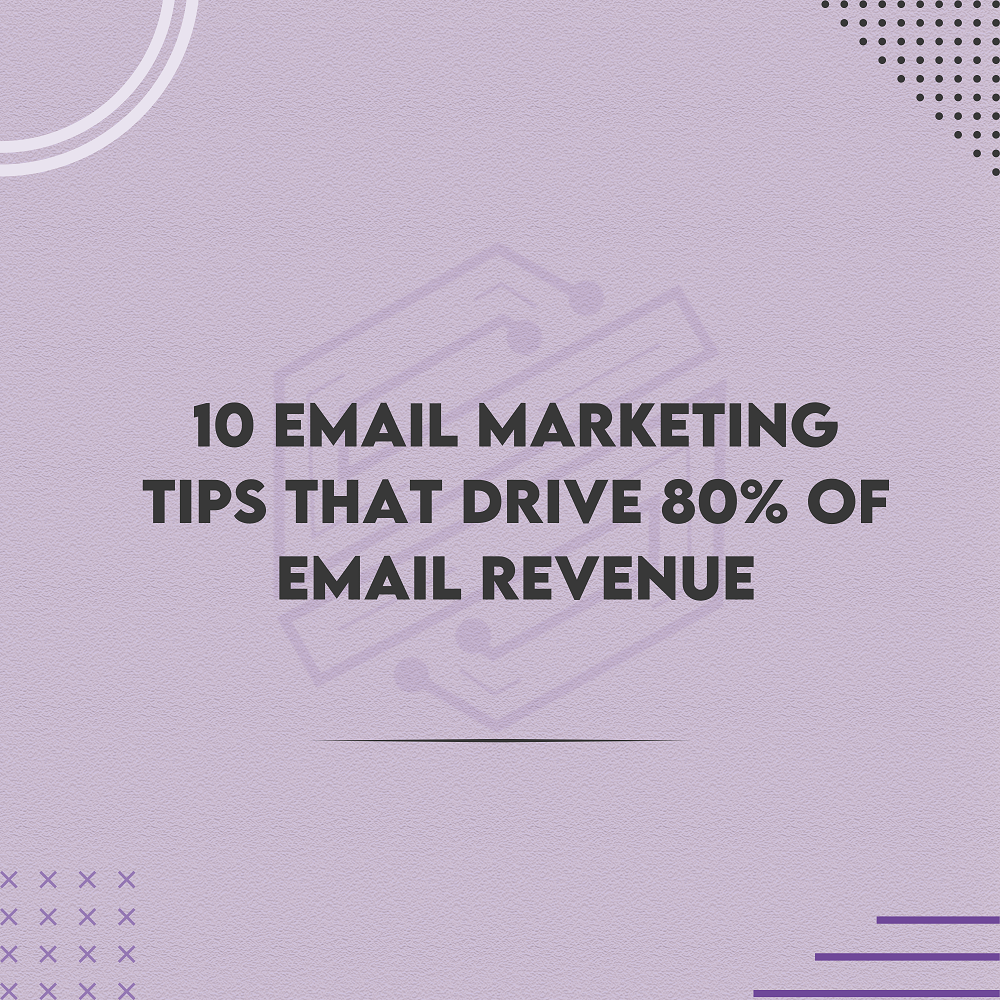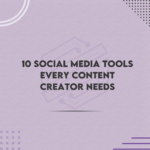Email marketing is one of the oldest and most effective types of digital marketing. It is a form of digital marketing aimed at prospects or customers through the use of email as a medium. Emails remain a viable tool to be employed in digital marketing strategies. Here are 10 tips for email marketing that drive 80% of email revenue.
Segment Your Email List: Divide your email subscribers into segments based on demographics, behavior, or engagement levels to send targeted and personalized content that resonates with each group. Implement behavioral triggers based on subscriber actions, such as website visits or previous purchases, to send targeted emails that align with their interests and engagement level.Encourage existing customers to refer friends or family members by offering incentives like discounts, rewards, or exclusive offers for successful referrals.
Create a VIP customer program with exclusive perks, rewards, or early access to products and services for loyal subscribers who demonstrate high engagement and brand advocacy.
Personalization: Address subscribers by their name and tailor email content based on their preferences, past interactions, or purchase history to make the emails more relevant and engaging. Use data to recommend products or services based on the subscriber’s previous purchases or browsing history, enhancing the relevance of your emails.Use a personal email address as the sender rather than a generic one to establish a direct connection and increase the likelihood of your emails being opened.
Curate holiday-themed gift guides or product collections in your emails to inspire purchasing decisions and facilitate shopping for special occasions.Send personalized birthday or anniversary emails to subscribers with special offers, discounts, or greetings to celebrate milestones and strengthen customer relationships.Engage subscribers with interactive polls, quizzes, or interactive content in emails to encourage participation, gather feedback, and enhance the overall user experience.
Compelling Subject Lines: Craft attention-grabbing subject lines that entice recipients to open the email and engage with the content inside. Develop an educational content series in your emails that provides valuable insights, tips, tutorials, or industry knowledge to establish thought leadership and build trust with subscribers.
Clear Call-to-Actions (CTAs): Include clear and compelling CTAs in your emails that direct recipients to take the desired action, such as making a purchase, signing up for a webinar, or visiting your website. Create a sense of urgency or scarcity in your emails by highlighting limited-time offers, exclusive deals, or low stock availability to prompt action.Target inactive subscribers with re-engagement campaigns that offer incentives, exclusive content, or reminders to reconnect with your brand.
Reward loyal customers with special discounts, promotions, or early access to new products through exclusive email campaigns. Collect feedback from subscribers through surveys or polls to understand their preferences, gather insights, and improve your email marketing strategies. Tailor your email campaigns to align with holidays, seasons, or special events to leverage relevant themes and drive engagement.
Collaborate with complementary brands or partners to cross-promote products or services in your emails, expanding your reach and attracting new audiences. Optimize the unsubscribe process by offering alternative preferences or feedback options to retain subscribers who may be considering leaving your email list.
Mobile Optimization: Ensure your emails are mobile-responsive to provide a seamless experience for recipients who access their emails on smartphones or tablets.
A/B Testing: Experiment with different elements of your emails, such as subject lines, CTAs, images, and content layout, to identify what resonates best with your audience and drives higher conversion rates.Regularly test email deliverability by monitoring spam scores, inbox placement rates, and engagement metrics to ensure your emails reach the intended recipients’ inboxes.Ensure your emails are accessible to all recipients, including those with disabilities, by using clear fonts, descriptive alt text for images, and structured layouts for easy readability.
Valuable Content:Provide valuable and relevant content in your emails that educates, entertains, or solves a problem for your subscribers, establishing trust and credibility with your audience. Include interactive elements like polls, quizzes, or surveys in your emails to increase engagement and gather valuable insights from your subscribers. Incorporate testimonials, reviews, or user-generated content in your emails to build trust and credibility with your audience.
Customize email content based on the recipient’s location, language, or cultural preferences to make the message more relevant and relatable. Share real customer success stories, case studies, or testimonials in your emails to showcase the value and impact of your products or services.
Automation:Use email marketing automation tools to set up triggered emails based on subscriber actions, such as welcome emails, abandoned cart reminders, or personalized recommendations. Set up a series of automated welcome emails to introduce new subscribers to your brand, products, or services, and nurture the relationship from the start. Provide exclusive content, promotions, or early access to products and services for subscribers who engage with your emails or meet specific criteria, fostering loyalty and retention.
Utilize advanced email personalization tools and dynamic content features to create hyper-targeted emails that resonate with individual subscribers based on their preferences and behaviors. Integrate email marketing efforts with other marketing channels, such as social media, SMS, or website retargeting, to create a cohesive customer experience and maximize reach and engagement.
Optimize Sending Frequency: Find the right balance in sending frequency to avoid overwhelming subscribers with too many emails or being forgotten with too few. Allow subscribers to customize their email preferences, including frequency and content types, to ensure they receive relevant information that aligns with their interests.Set up drip campaigns with a series of sequenced emails that gradually nurture leads, provide relevant information, and guide subscribers through the customer journey towards conversion.
Measure and Analyze: Track key metrics like open rates, click-through rates, conversion rates, and revenue generated from email campaigns to analyze performance and optimize future strategies for better results.Establish a feedback loop between the marketing and sales teams to align email campaigns with sales objectives, gather insights on lead quality, and optimize conversion strategies.
Conclusion:
To optimize email marketing, segment your list based on demographics, personalize content, craft compelling subject lines, include clear call-to-actions, ensure mobile responsiveness, conduct A/B testing, provide valuable content, use automation tools, balance sending frequency, and track key metrics for performance analysis and future strategies.





